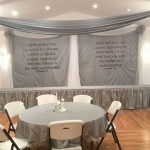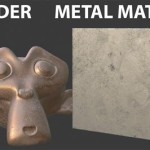Decorating With a Dark Gray Couch: A Comprehensive Guide
A dark gray couch is a versatile and sophisticated centerpiece for any living space. Its neutrality allows it to blend seamlessly with a variety of design styles, from minimalist modern to cozy traditional. However, effectively decorating around a dark gray couch requires careful consideration of color palettes, textures, and overall room balance. This article explores key elements of crafting a cohesive and aesthetically pleasing interior design scheme that complements a dark gray couch.
Understanding the Versatility of Dark Gray
Dark gray serves as an excellent foundation because it acts as a neutral backdrop. This allows other elements in the room, such as accent colors, artwork, and accessories, to take center stage. Its inherent depth adds a touch of elegance and sophistication that lighter neutrals might lack. Unlike pure black, dark gray possesses a softer, more approachable quality, making it less stark and more inviting. The specific shade of dark gray also plays a significant role. A charcoal gray, for instance, will lend a more dramatic and modern feel, while a softer, almost greige-toned gray will create a warmer and more transitional aesthetic. The undertones of the gray (blue, green, or brown) will also influence the surrounding color choices.
When selecting a dark gray couch, it is crucial to consider the fabric. Different materials will interact with light in unique ways, affecting the perceived color and texture. Velvet, for example, will create a richer, more luxurious appearance, while linen will offer a more relaxed and informal vibe. The weave of the fabric will also impact the overall texture and how it integrates with other textiles in the room. Careful consideration of the fabric's properties is vital for achieving the desired aesthetic.
Beyond the fabric, the style of the couch itself will contribute to the overall design. A sleek, modern couch with clean lines will pair well with minimalist decor, while a more traditional, tufted sofa will complement a classic or transitional style. The scale of the couch is also important. A large sectional can anchor a spacious living room, while a smaller loveseat might be better suited for a cozier setting. The shape, size, and style of the couch must be in proportion to the room and complement the other furniture pieces.
Choosing Complementary Colors and Textures
The success of decorating with a dark gray couch hinges on selecting complementary colors and textures that create visual interest and depth. A monochromatic scheme, utilizing various shades of gray and white, can be particularly effective for creating a sophisticated and calming atmosphere. Incorporating lighter grays, off-whites, and even metallic accents will add dimension and prevent the space from feeling flat or monotonous. The key is to introduce variations in tone and texture to maintain visual appeal.
For those seeking a more vibrant and dynamic look, introducing pops of color is an excellent approach. Jewel tones such as emerald green, sapphire blue, and ruby red can create a striking contrast against the dark gray backdrop. These colors can be incorporated through throw pillows, area rugs, artwork, and accent furniture. When using bold colors, it is important to distribute them strategically throughout the room to maintain balance and prevent any single area from feeling overwhelming. A balanced color scheme ensures a harmonious and visually appealing space.
Another approach is to use warmer, earth-toned colors to create a more inviting and comfortable atmosphere. Shades of beige, tan, and brown can soften the coolness of the dark gray and create a sense of warmth. These colors can be introduced through natural materials such as wood, leather, and woven textiles. Combining warm and cool tones can create a dynamic and balanced space, preventing it from feeling too stark or too bland.
Texture plays a crucial role in adding depth and interest to a room with a dark gray couch. Incorporating a variety of textures, such as knitted throws, velvet pillows, and woven rugs, can create a layered and tactile environment. Contrasting textures is particularly effective. For instance, pairing a smooth leather chair with a chunky knit blanket can create a visually appealing juxtaposition. The interplay of textures adds visual interest and prevents the space from feeling one-dimensional.
Metallic accents can also enhance the overall design. Gold, silver, and bronze can add a touch of glamour and sophistication to a dark gray couch. These accents can be introduced through decorative pillows, coffee tables, lighting fixtures, and artwork frames. The key is to use metallic accents sparingly to avoid overwhelming the space. A few well-placed metallic elements can elevate the overall aesthetic and add a touch of luxury.
Optimizing Lighting and Accessories
Lighting is a critical element in any room, but it is particularly important when decorating with a dark gray couch. Dark colors tend to absorb light, so it is crucial to ensure ample illumination to prevent the space from feeling gloomy or confined. A combination of natural light, ambient lighting, and task lighting is ideal. Large windows that allow natural light to flood the room are a significant asset. If natural light is limited, strategically placed lamps and overhead fixtures can compensate.
Ambient lighting, such as recessed lighting or chandeliers, provides overall illumination for the room. Task lighting, such as floor lamps or table lamps, is essential for reading and other activities. Accent lighting, such as spotlights or picture lights, can highlight artwork and other decorative elements. Layering different types of lighting creates a more dynamic and functional space. The color temperature of the light bulbs also impacts the overall atmosphere. Warmer light bulbs create a cozier feel, while cooler light bulbs create a more modern and energizing environment.
Accessories play a vital role in personalizing the space and tying the design together. Throw pillows are a simple and effective way to introduce color, texture, and pattern to a dark gray couch. Experimenting with different sizes, shapes, and fabrics can create a visually appealing arrangement. Area rugs can also define the seating area and add warmth and texture to the floor. Choosing a rug that complements the color palette and design style of the room is essential. The size of the rug is also important; it should be large enough to anchor the seating area and tie the furniture pieces together.
Artwork is another important element to consider. Selecting artwork that complements the color palette and design style of the room can enhance the overall aesthetic. Large-scale artwork can serve as a focal point, while smaller pieces can add visual interest to walls and shelves. The placement of artwork is also crucial; it should be hung at eye level and in a way that complements the surrounding furniture and decor. The frames of the artwork should also be carefully considered, as they can contribute to the overall design.
Other accessories, such as plants, vases, and coffee table books, can add personality and character to the space. Plants can bring life and freshness to a room, while vases can add a touch of elegance. Coffee table books can reflect personal interests and add visual interest to the coffee table. The key is to choose accessories that are both functional and aesthetically pleasing. Avoid cluttering the space with too many accessories; a few well-chosen items can have a greater impact.
Wall color is also a key factor. While a dark gray couch works well with many wall colors, some pairings are more successful than others. Crisp white walls will create a clean and modern look, while warmer off-white shades will soften the space. Light gray walls can create a monochromatic scheme, while bolder colors such as navy blue or deep green can create a more dramatic effect. The choice of wall color depends on the desired aesthetic and the overall color palette of the room.
Ultimately, decorating with a dark gray couch requires a thoughtful approach to color, texture, lighting, and accessories. By understanding the versatility of dark gray and carefully selecting complementary elements, one can create a space that is both stylish and comfortable. The key is to experiment and find a design that reflects personal taste and preferences.

150 Best Dark Grey Sofa Living Room Ideas Decor Designs

29 Dark Grey Couch Living Room Ideas For A Timeless Aesthetic Learn

14 Ways To Style A Grey Sofa In Your Home Smart Furniture Decor

34 Gray Couch Living Room Ideas Inc Photos

15 Ways To Style A Grey Sofa In Your Home Décor Aid

34 Grey Couch Living Room Ideas That Complement Any Space

Gray Sofa Living Room Ideas To Refresh Your Space

4 Ways To Decorate Around Your Charcoal Sofa Maria Killam

Dark Gray Couch Design Ideas

Dark Gray Couch Decor Sutton Bookshare
Related Posts







